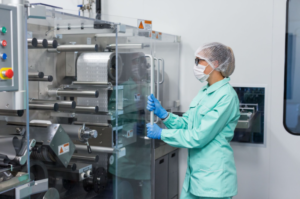
Eating disorders are complex and often misunderstood conditions that affect individuals physically, emotionally, and mentally. While they may start as a means of coping with underlying issues, they can quickly evolve into life-threatening conditions. As a result, individuals suffering from eating disorders require professional help to achieve long-term recovery. An eating disorder treatment facility plays a vital role in supporting both mental and physical healing, offering specialized care that addresses all aspects of the condition.
Understanding Eating Disorders and Their Impact
Eating disorders, including anorexia nervosa, bulimia nervosa, and binge eating disorder, can cause a wide range of physical and psychological problems. From malnutrition and organ damage to severe emotional distress, these disorders take a significant toll on an individual’s health. The emotional component often includes feelings of guilt, shame, and a distorted body image, which complicate the healing process. Recognizing the severity of the condition is the first step toward recovery, and that is where a dedicated eating disorder treatment facility can make a crucial difference.
Comprehensive Care for Mental Health
One of the primary roles of an eating disorder treatment facility is to provide expert care for the mental health aspect of the condition. Mental health professionals, such as psychologists and psychiatrists, are integral parts of the treatment team. They work closely with patients to uncover the root causes of the eating disorder, such as past trauma, anxiety, depression, or obsessive-compulsive behaviors.
Therapeutic modalities used in eating disorder treatment facilities often include:
- Cognitive Behavioral Therapy (CBT): CBT is highly effective in helping individuals change negative thought patterns and behaviors related to food and body image. It helps patients develop healthier coping mechanisms and improves their relationship with food.
- Dialectical Behavior Therapy (DBT): DBT is particularly useful for individuals who struggle with emotional regulation. This therapy helps patients manage intense emotions and reduce harmful behaviors associated with eating disorders.
- Group Therapy: In many facilities, group therapy allows patients to connect with others who are going through similar experiences. This fosters a sense of community, reduces feelings of isolation, and provides opportunities for shared learning.
The combination of these therapies ensures that individuals can address the psychological factors driving their eating disorder, thus laying the foundation for recovery.
Addressing the Physical Effects of Eating Disorders
In addition to mental health support, eating disorder treatment facilities provide medical care to address the physical consequences of these disorders. Malnutrition, electrolyte imbalances, and dehydration are common among individuals with eating disorders and can lead to serious medical complications, including heart issues, kidney damage, and gastrointestinal problems.
A team of doctors, dietitians, and nurses work together to monitor the patient’s physical health throughout the recovery process. This may include:
- Nutritional Counseling: Dietitians play a critical role in educating patients on how to develop healthy eating habits. They work with patients to create balanced meal plans that restore proper nutrition and promote physical healing.
- Medical Monitoring: Regular health assessments help identify any underlying medical conditions or imbalances that may need to be addressed. This includes monitoring vital signs, lab tests, and weight recovery in a supportive, non-judgmental manner.
- Gradual Weight Restoration: For individuals suffering from anorexia or other restrictive eating disorders, weight restoration is a critical aspect of recovery. Treatment facilities often implement gradual weight gain plans to ensure that patients regain their physical health without triggering further anxiety or unhealthy behaviors.
The integration of mental and physical care is essential to a holistic approach to eating disorder treatment, as recovery cannot be fully achieved without addressing both aspects.
Creating a Safe and Supportive Environment
A crucial element of an eating disorder treatment facility is its ability to offer a safe, supportive, and structured environment. Patients often face significant challenges when attempting to overcome an eating disorder on their own. A structured facility removes many of the daily stressors and triggers that may impede recovery, creating an environment conducive to healing.
The facility offers a controlled setting where patients are supervised, reducing the temptation to engage in harmful behaviors. Additionally, it promotes a sense of accountability, as patients are expected to follow treatment protocols and engage in therapeutic activities.
Aftercare and Long-Term Support
The recovery process does not end after an individual leaves an eating disorder treatment facility. In fact, aftercare is an essential component of long-term recovery. Eating disorder treatment facilities often provide comprehensive aftercare programs, which may include:
- Outpatient Therapy: Continued therapy after discharge allows patients to maintain their progress and deal with any lingering issues.
- Support Groups: Many facilities offer support groups where individuals can maintain connections with peers who have gone through similar challenges.
- Relapse Prevention: Programs focus on equipping individuals with tools to prevent relapse and manage triggers that may arise in daily life.
These aftercare services ensure that individuals have a support system in place as they transition back into their everyday lives, reducing the likelihood of relapse and helping them maintain their recovery.
Conclusion
An eating disorder treatment facility plays a pivotal role in the recovery process by providing both mental health and physical healing. Through specialized therapy, medical care, and a structured environment, these facilities offer comprehensive support to individuals seeking to overcome eating disorders. While recovery may be challenging, with the right care and commitment, individuals can rebuild their relationship with food and achieve lasting healing.






